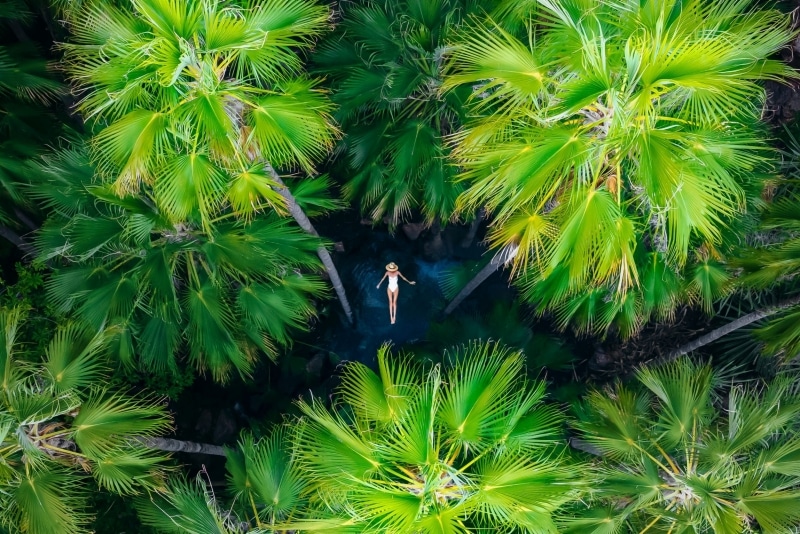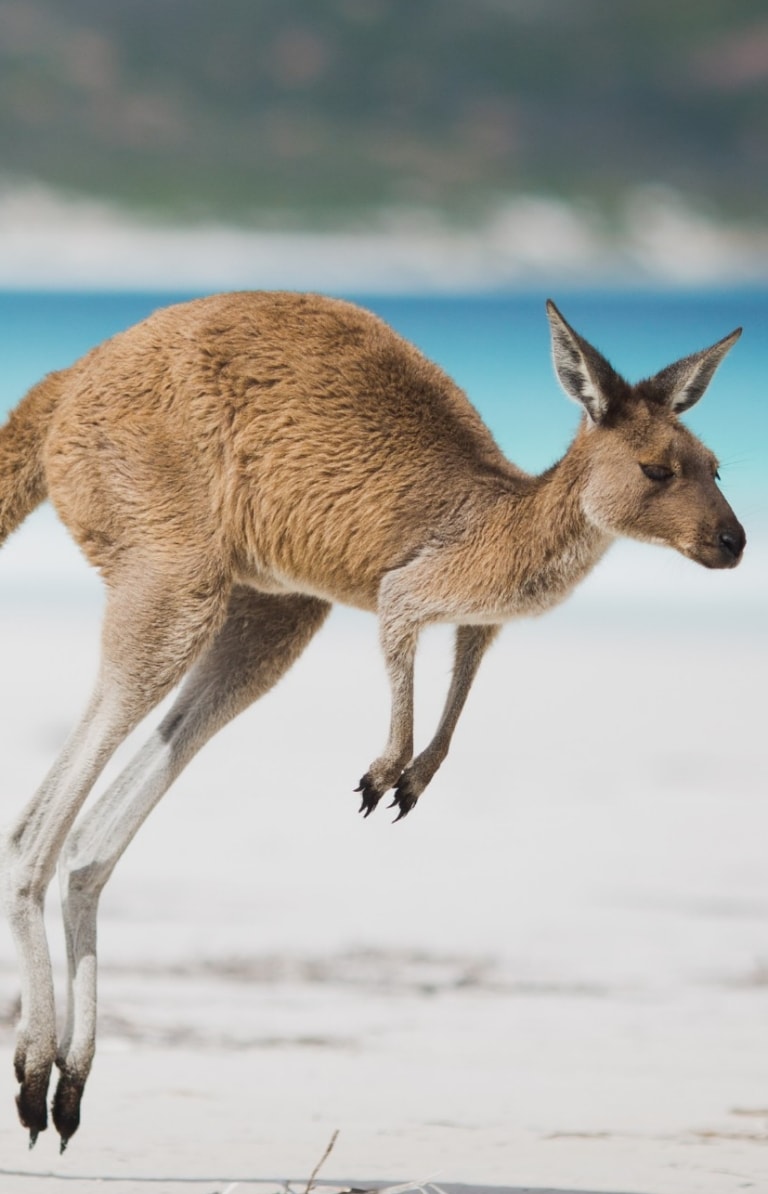Guide to Ningaloo Reef
Aboriginal name: Nyinggulu (pronounced Neen-ga-loo)
Beside the red soils of the Cape Range lies the turquoise lagoons of Ningaloo Reef, home to some of the world’s most incredible marine creatures.
Some 1,200km (745mi) north of Perth, the fringing Ningaloo Reef is a sparkling gem in Western Australia’s crown. Right on the coast, the reef is UNESCO World Heritage-listed and offers a slew of outdoor adventures. Ningaloo’s most notable visitors are the whale sharks. This is one of the world’s largest aggregations, making it a great place to swim with them, along with manta rays, turtles or humpback whales during their migration.
Top things to do at Ningaloo Reef
Join a guided kayak or snorkel tour
Exploring the reef with a guide means you’ll learn more and experience it safely. Slide off your kayak or step off the beach, snorkelling through coral gardens meeting turtles, Nemo fish, and maybe baby reef sharks and rays.
Swim with the world’s biggest fish
Between about March and July each year, Ningaloo reef is perhaps the best place in the world to see whale sharks. Jump from a boat into the blue to come face to face with these harmless giants as they effortlessly glide by.
Hop aboard a glass bottom boat
Board a glass bottom boat to see the reef without getting wet. Vessels are designed for ease of embarkation and are suitable for children, with safety equipment provided. Some tours have snorkelling options, and all include commentary.
Luxuriate beside the reef at Sal Salis
For a Ningaloo experience like no other, treat yourself to a stay at Sal Salis, an eco-luxe safari camp beside the reef and inside the national park. Enjoy gourmet dining, guided reef tours, gorge hikes and full nature immersion during your visit.
Swim with (or watch) humpback whales
Between July and October annually, some 40,000 humpback whales migrate past Ningaloo on their way south. Several licensed operators offer swims with them, and being underwater with these curious, magnificent animals is unforgettable.
Explore Cape Range National Park
Cape Range National Park holds land treasures, too. Drive up to Charles Knife Canyon for the views and the dramatic gullies. On the opposite side of the Cape, try the Mandu Mandu gorge hike, looking out for shy rock wallabies along the way.
Take in the reef from the air
There’s no better way to appreciate the colours and majesty of Ningaloo Reef and Cape Range’s canyons than from the air. See red dirt meeting white sands and the turquoise lagoon. You may spot turtles, manta rays, whales and dugongs.
Snorkel with manta rays in Coral Bay
The hamlet of Coral Bay is famous for manta rays, with tours all year. Follow your guide off the boat, peering down as the harmless and gentle mantas materialise into view, flying underwater and cavorting to impress each other.
Try marine fly fishing
Fly fishing is not just for freshwaters, and there’s nowhere better to try marine fly-fishing than Ningaloo Reef. Catch a bone fish or permit in the calm waters of Exmouth Gulf, or head out to sea in pursuit of mighty sail fish.
Cruise through Yardie Creek Gorge
Join a one-hour boat trip up Yardie Creek and into the gorge system. Learn about local European and Indigenous history, see ospreys and egrets, and spot black-footed rock wallabies that cling to sheer cliffs.
Ningaloo Reef tours and accommodation

Mantarays Ningaloo Beach Resort
Hotels, Resorts • Swimming Pool • 4 1/2 Stars
Accommodation
From AU$190 to AU$725

Exmouth Escape Resort
Apartments, Resorts • Swimming Pool • 4 1/2 Stars
Accommodation
From AU$250 to AU$505

Ningaloo Coral Bay - Bayview
Caravan, Camping and Holiday Parks, Cottages, Holiday Houses • Swimming Pool • 3 1/2 Stars
Accommodation
From AU$50 to AU$845

Hospitality Carnarvon, SureStay Collection by Best Western
Hotels, Motels • Swimming Pool • 3 1/2 Stars
Accommodation
From AU$139 to AU$189

Coral Coast Tourist Park
Caravan, Camping and Holiday Parks • Swimming Pool • 3 1/2 Stars
Accommodation
From AU$39 to AU$315

Potshot Hotel Resort
Apartments, Hotels, Motels, Resorts • Swimming Pool • 3 1/2 Stars
Accommodation
From AU$145 to AU$400

Ningaloo Lodge Exmouth
Motels, Retreat and Lodges • Swimming Pool • 3 Stars
Accommodation
From AU$200.00 to AU$200.00

Carnarvon Central Apartments
Apartments • 3 Stars
Accommodation
From AU$140 to AU$185

Ningaloo Reef Resort
Hotels, Resorts • Swimming Pool
Accommodation
From AU$219 to AU$399

Bullara Station Stay
Caravan, Camping and Holiday Parks, Cottages, Farmstays, Retreat and Lodges • Bar
Accommodation
From AU$8 to AU$500



















































































































































